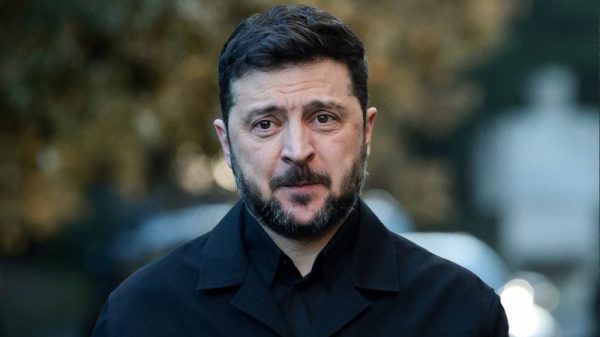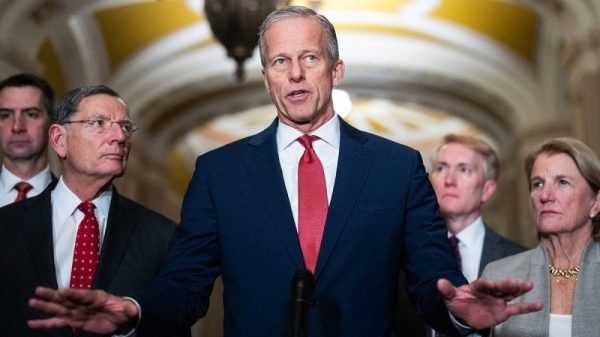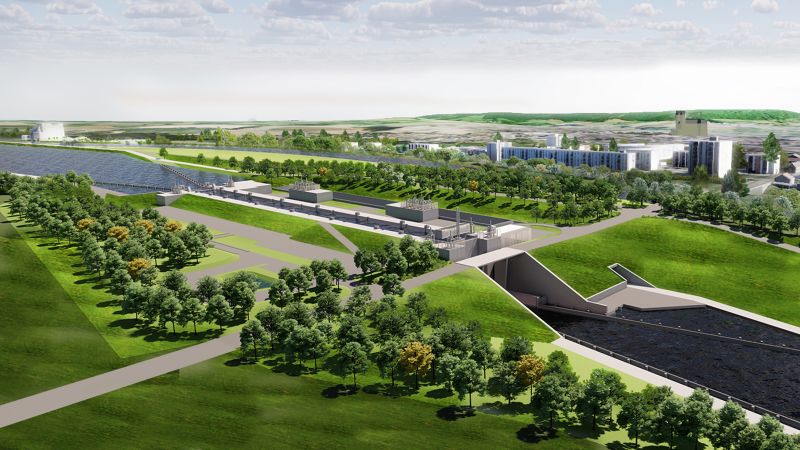In a corner of northeast France, the ground rumbles with industry.
After multiple false starts and much political back and forth, work is underway on the Seine-Nord Europe Canal (SNEC), a €5.1 billion ($5.5 billion) project designed to break up one of the continent’s major transport bottlenecks.
The ambitious 107-kilometer (66-mile) long canal will connect the Oise River and the Dunkirk-Escaut Canal, forging a network of waterways capable of transporting large freight between Paris, Belgium, the Netherlands and Luxembourg, where currently it travels overland, clogging roads.
But the canal must chart sensitive waters; starting in Compiègne in the south and ending in Aubencheul-au-Bac in the north, it cuts through land that once comprised World War One’s Western Front. The project must negotiate historic battlegrounds, as well as the delicate task of unearthing soldiers’ remains along its route.
Yet with towering locks and scores of bridges to be built, a river to redirect and a grand plan to raise the canal over a protected wetland, that’s only one item on a long list of challenges to overcome for it to become operational in 2030.
Half a century in the making
At present, the Canal du Nord is the most significant waterway connecting the Seine River basin with the Escaut River basin in northeast France. The 95-kilometer (59-mile) canal was already considered insufficient by the time it was completed in the 1960s, owing to its narrow gauge limiting the size of the vessels it could transport.
A replacement canal for larger ships was first conceived close to 50 years ago, but struggled to take off. The SNEC was backed by the European Union in 2013, and the French government in 2019 entered into a financing agreement between the EU, the state and local authorities along its route.
The 54-meter (177-foot) wide SNEC will be like “a move from small roads to motorway,” said Jérôme Dezobry, president of the executive board of the Société du Canal Seine-Nord Europe (SCSNE), which was created to oversee the SNEC.
The canal will be capable of transporting vessels weighing up to 4,400 tons (more than seven times the limit of its predecessor), carrying the equivalent of 220 trucks-worth of freight.
Design and engineering company Arcadis, which consulted on the project, claims moving freight along waterways produces three times fewer carbon emissions than by road, and that the canal could remove 760,000 trucks from roads every year once operational.
The megaproject strings together multiple hefty infrastructure solutions. One particular lock will have the same height as a 10-story building and will empty the equivalent of an Olympic-size swimming pool in 30 seconds, said Dezobry.
Environmental impact
Cutting through wetland and agricultural land, the SNEC has prompted questions about its impact on the surrounding landscape.
The sealed canal will not use groundwater, said Dezobry, and will only draw water from the Oise River, which will be stored in a 14 million cubic meter (494 million cubic foot) reservoir being built in Allaines. The same river is currently undergoing significant disruption as workers undertake a two-year project to divert its path for 4 kilometers (2.5 miles) between the communes of Thourotte and Montmacq to make way for the canal.
“It’s difficult … you cannot divert a river without any environmental impact,” Dezobry conceded.
Bourdon says that efforts have been made to limit the impact to “existing wet zones and the sensitive ecological area of the Tortille valley,” and that new wetlands and forests have been created to offset any damage to the environment.
Another solution to negotiating existing wetlands is to simply – or not so simply – go over them.
Perhaps the single grandest feat of engineering will be a 1.3-kilometer (0.8-mile) navigable bridge which will raise the canal 30 meters above a protected wetland in the Somme Valley. Dezobry says the project is out to tender and will cost around €400 million ($429 million). Construction is scheduled to begin in 2025.
But not everyone supports the canal’s construction. In a statement via email, Extinction Rebellion Compiègne, which is part of a collective opposed to the canal, said, “This project has not been developed for an ecological purpose but with an economic growth vision in mind.”
The environmental campaign group claimed that areas that are being developed to mitigate the canal’s environmental impact “are already natural” and “will not compensate (for) what is going to be destroyed.”
“We do not believe the canal will significantly reduce CO2 emissions,” Extinction Rebellion said, arguing it would instead allow for extra capacity on motorways for more trucks. It added, “today nothing demonstrates that the canal will be frequently used. Unfortunately, we may (be building) infrastructure that will not be used as expected. And for this, a big area is being destroyed and artificialized.”
Taking on the Western Front
But for all its engineering challenges, perhaps the most headline-grabbing element of the canal is its route through historic battlefields.
The CWGC is working in partnership with French authorities and the Société du Canal on exploratory operations. Excavations along sections of the route began this year and will run through 2024 ahead of the canal dig.
Remains will be transferred to Beaurains, where attempts to identify soldiers will be made. The likelihood of a positive identification is low, the CWGC says, even with the option of DNA sampling.
The Loos British Cemetery in Pas-de-Calais is undergoing an extension by the CWGC to provide space for up to 1,200 bodies, including those found during canal-related excavations.
Economic impact
The canal has also been touted as an economic stimulus and 500 people are currently working on it, says Dezobry, with that figure anticipated to rise to 6,000-8,000.
By linking northeastern France to a 20,000-kilometer (12,400-mile) network of large-gauge European waterways from Paris to Antwerp, host region Hauts-de-France is betting on the project having local benefits. Inland ports are planned along the SNEC route, aiding exports, as well as providing recreational opportunities, say its designers.
But an economic boom could itself have unintended consequences. Even if the canal is able to preserve and conserve its surrounding environment, there have been concerns raised that the potential for an increase in people living and working along its route could place additional stresses on water resources.
Despite the canal’s stop-start history, the Société du Canal Seine-Nord Europe is confident its construction timeline can be met and the canal will become operational in 2030.





































